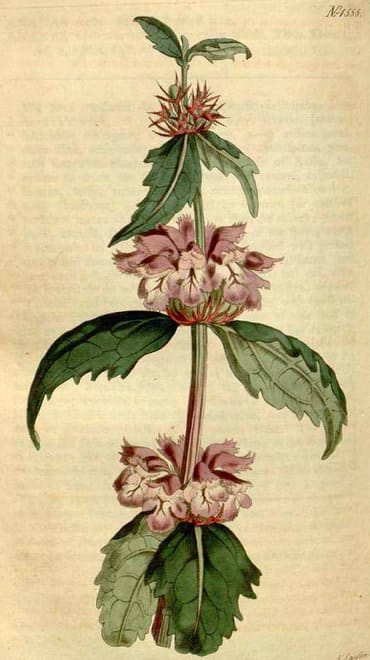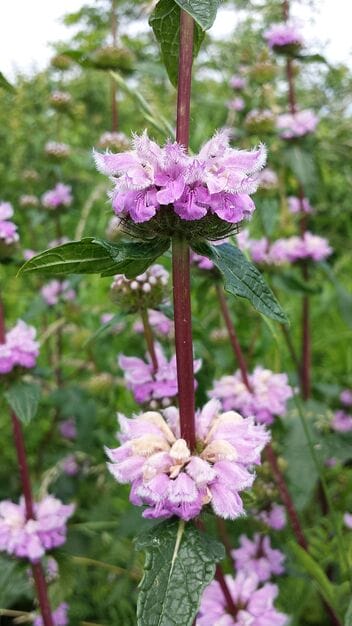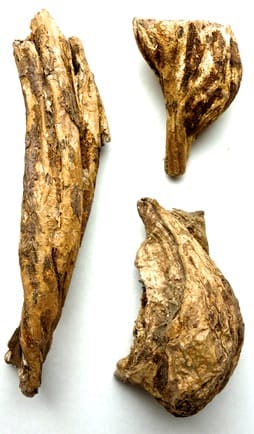Phlomis younghusbandii, Lug Mur ལུག་མུར
Jerusalem SageLug Mur (Tibet)
Pang Xie Jia, Kuai Jing Cao Su (TCM)
 Phlomis tuberosa
Phlomis tuberosaCurtis’s Botanical Magazine (1813)
 Phlomis tuberosa
Phlomis tuberosa(Photo by Stefan.lefnaer) (Wikimedia)
 Phlomis root (Adam, 2016)
Phlomis root (Adam, 2016)Botanical name:
Phlomis younghusbandii (syn. P. kawaguchii, P. tuberosa, Phlomoides younghushandii)
Tibetan texts recognise 3 types of Lug mur:
- Male (Pho): white, solid, hard root with strong energy
- Female (Mo): large, hard solid root with bitter taste
- Neuter (Ma ning): white,. soft, fine root with medium energy
Parts used:
Root
Temperature & Taste:
Neutral, Sweet
Uses:
1. Clears Heat, Benefits Lungs, Stops Cough:
-Cough, Bronchitis
-Pharyngitis
-Common Cold, Influenza with Fever
-burning sensation in the chest
-Chronic Lung disorders
2. Moves the Blood, Resolves Masses:
-Benign and Malignant tumors
-effective in healing Wounds
Dose:
Powder: 1–3 grams
Substitute:
Phlomis tuberosa is used synonymously with China root (Smilax spp) in Tibetan Medicine of the Burat region.
Main Combinations:
1. Hot, dry, sore throat, Cough with Phlegm, Asthmatic cough, Phlomis Lug Mur with Clove, Tabasheer, Chebulic Myrobalan, Licorice, White Sandalwood (as in Phlomis 7 of Tibetan Medicine)
Major Formulas:
Phlomis 7 (Lug mur bdun pa)
Cautions:
None noted.
